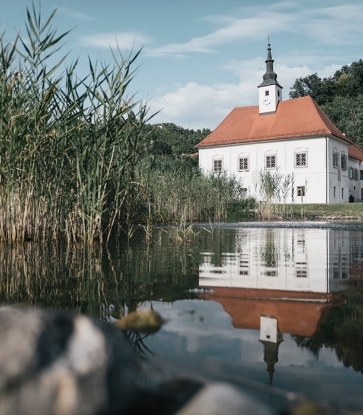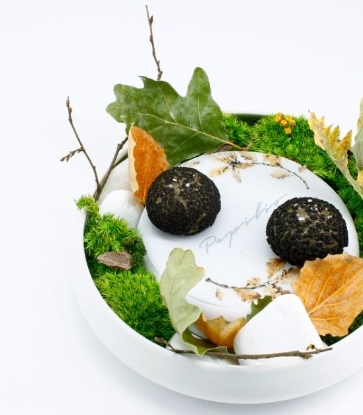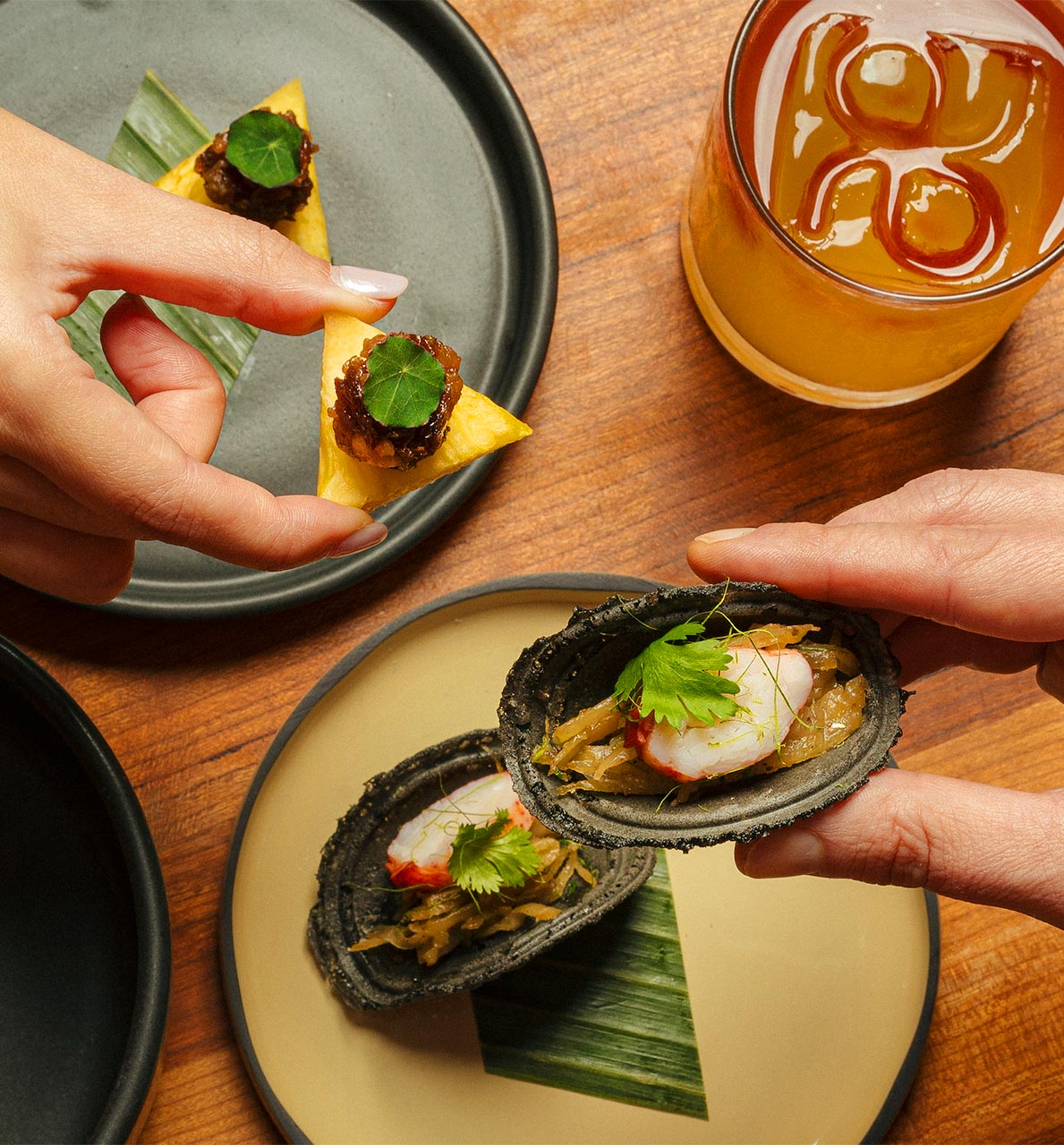Flanking the ancient moat system of Pilsētas kanāls, Riga Central Market sits on the boundary between Old and Central Riga. Housed within converted military hangars, the site features five metal-framed tunnels – now housing culinary vendors, rather than weapons of warfare. Since 1930, Rīgas Centrāltirgus has symbolised a remarkable transition of a city turning inwards to curate a culinary identity. It has become an iconic local landmark, and its revered status was cemented in 1998 with formal UNESCO recognition.
From shots of herbal black balsam to pickled cabbage and fresh herbs, the market thrives with eclectic offerings. Join us as we step inside.
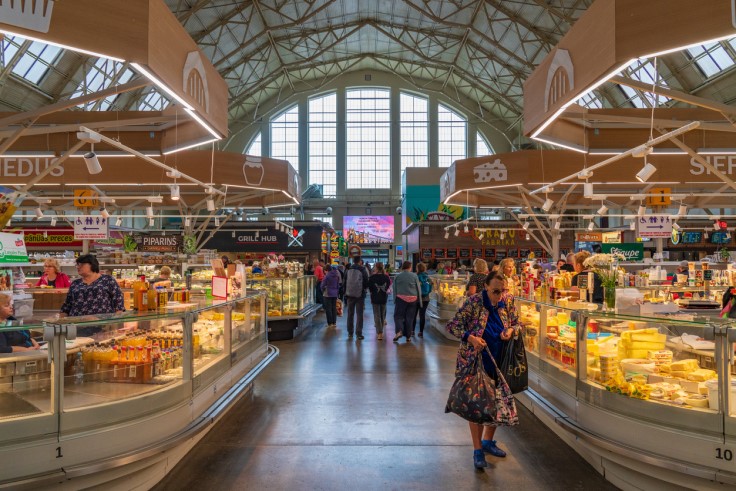
The History of the Market
From an architectural perspective, Riga Central Market wears its story on its sleeve. When looking at a market crafted from former aircraft-storage tunnels, needless to say, there’s a tale to tell.It’s important to understand the fragmentation of Europe in World War I. As territories fell to German occupation, Riga was taken dramatically by an offensive in 1917. This attack would create long-lasting ripples in the European systems; the fall of Riga came a few months after the abdication of Russia's Tsar, and when Germany was defeated in 1918, it prompted a subsequent declaration of Latvia’s independence.
The Battle of Riga didn’t just shift occupations and set the stage for independence, though. During the brief period that German forces controlled the city, they constructed military infrastructure, including Zeppelin hangars.
In 1922, as Riga began reforging its identity as the capital of a newly independent Latvia, it decided to revisit its earlier demand for a larger market – a mission that the turbulence of WWI had previously dispelled. Where better to begin than by repurposing the colossal hangars that the German forces had left behind?
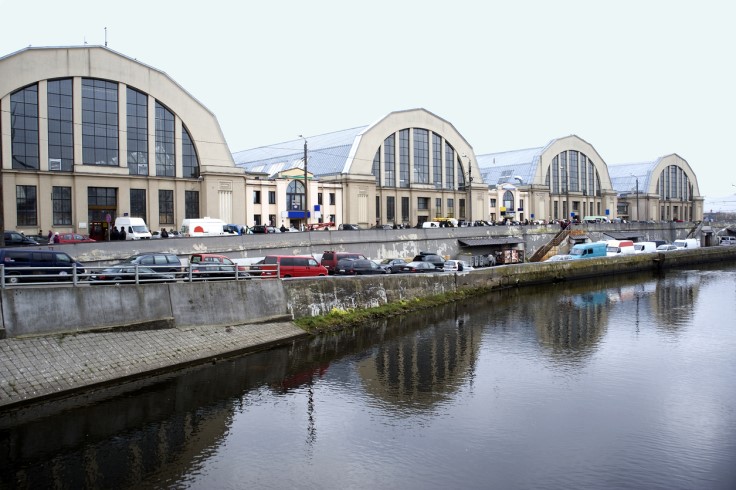
By 1924, this resourceful project was underway, and by 1930, Rīgas Centrāltirgus was open. Its construction was no mean feat; it was admired as the largest and most modern market in Europe.
Anyone familiar with Latvian history knows that the 20th century didn’t let peace settle for long. The outbreak of World War II saw the launch of the German-Soviet Nonaggression Pact, followed by a subsequent invasion by the Red Army in 1940.
From 1940 until Latvia’s eventual independence in 1991, Riga Central Market fell under restrictive state control: a grand plan for the public quietly shelved. The road to success was bumpy, to say the least. Yet, now, the Central Market is one of the most beloved markets in Europe, frequented by a steady stream of chefs, residents and tourists. With its story being one of hope and local pride, we asked three of Riga's chefs what role the market plays in their daily lives.
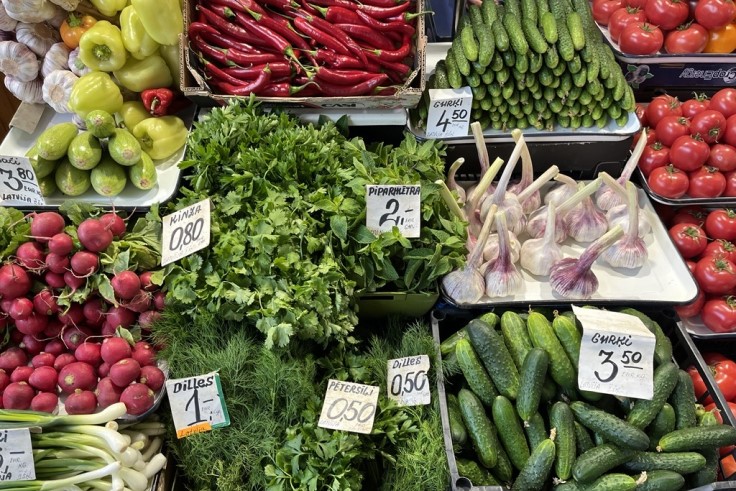
Barents – Inspiration and Nostalgia
For Artūrs Trinkuns, Head Chef at Barents, the market plays a central role in operations. Relationships with stallholders hinge on a balance of trust and routine; Trinkuns places repeat orders and a representative from Barents visits at least once on a weekly basis, usually each Tuesday.There’s something about that eclectic seasonality that’s hard to shake, though. “I also enjoy walking through the market for inspiration, especially with the constant changes each season brings. Often, I’ll pick up produce that simply stands out,” Trinkuns reveals. He has a particular love for herbs and will never pass by a sprig of fresh dill. He explains that, aside from its practicality in pickling, salting, and flavouring salads or meats, dill symbolises something uniquely ‘Latvian.’ “I can't imagine my life without this herb, neither the Central Market,” Trinkuns adds.
That said, Trinkuns’ favourite dish to craft with market ingredients is a little sweeter. Barents serves a delicate rhubarb posset with birch sap and lilac sorbet. Served with rhubarb wine and a meadow flower sauce, it’s a true symphony of spring, captured in a dish.
According to Trinkun, the dish blends two meaningful elements. “Rhubarb has been a part of my life since childhood, evoking memories of days spent in the countryside, surrounded by blooming meadows and enjoying my grandmother’s rhubarb clafoutis,” he reminisces. “More recently, I discovered a favourite cocktail at Barents – a twist on the classic French 75, featuring rhubarb. This inspired me to blend these memories and flavours into a single, seasonal creation: fresh and floral, yet refined and elegant – a dessert that reflects both nostalgia and sophistication.”
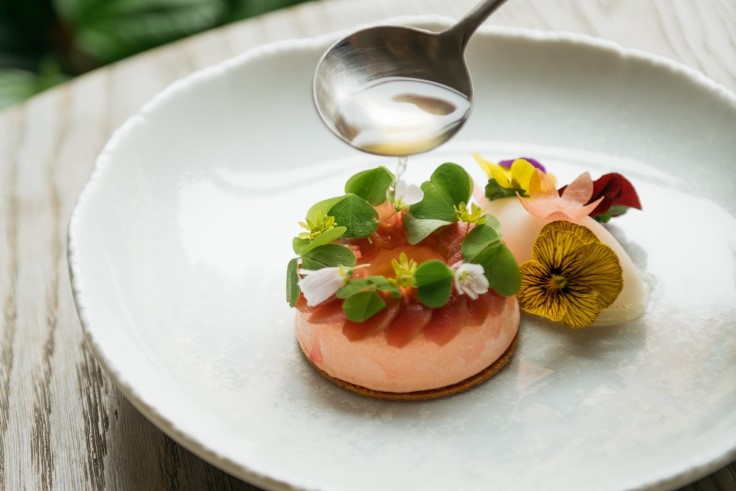
Max Cekot Kitchen – New Discoveries and Stories
Maksims Cekots, chef at the Michelin-Starred Max Cekot Kitchen, echoes a similar sentiment. In summer, he visits Riga Central Market every week. For Cekots, it’s not only essential that he goes in-person, but that he teaches his team how to choose ingredients: that hyper-awareness is part of the restaurant’s philosophy.“I have my favorite spots where I trust the quality, but I’m always searching for something new and unexpected. I really enjoy talking to farmers, hearing their stories and discovering products I’ve never seen before,” he explains. “The moment I find something special, I already start creating a dish in my head – that’s the magic of the market. It’s such a creative place because I can touch, smell and see the products before they become part of a dish.”
Cekots describes how one ingredient can change everything, and a mixture of creativity and persistence has shaped his approach to market shopping. “Once I found wild strawberries, but the amount was small,” he explains, “I started asking around, talking to people and now everyone at the market knows me – they pick wild strawberries especially for me during the season. I’m very curious and I don’t believe in 'no' as an answer. If something is hard to get, we find a way to make it happen.”
The birthchild of his tenacity is a delicate strawberry dessert. For Cekots, this beloved Latvian wild berry is reminiscent of his grandmother’s pancakes from his childhood. “In this dessert, strawberries are everywhere, but prepared in different forms – fresh, roasted, even as a sauce – so that every bite tells a little part of that story.”
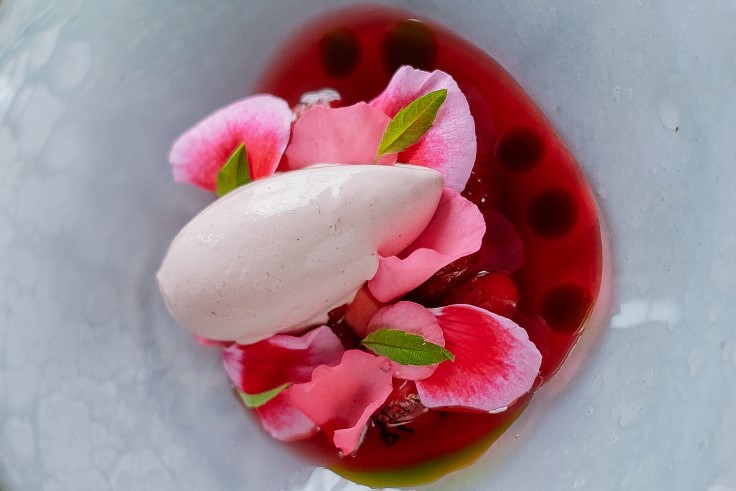
3 Chefs – Marketplace Tours and Latvian Identity
Mārtiņš Sirmais, the chef behind 3 Chefs (3 Pavāru Restorāns in Latvian), takes a slightly different stance to Riga Central Market. His restaurant embraces an open philosophy: a classical tasting menu meets cooking lessons and, surprisingly, marketplace tours.“These tours are more than just walks through food stalls; they’re a way to explore centuries of Latvian history through ingredients, dishes and cooking traditions,” Sirmais says, “We guide them through not just what we eat, but why and how these foods became part of our identity.”
His long-standing collaborations with stallholders mean that Sirmais often receives his produce directly, but Riga Central Market remains a place to seek inspiration and snatch up seasonal goods. “The market is a living, changing place – and weather plays a huge role in what grows best, when it ripens and how it tastes.” Sirmais adds, “We spend time talking with sellers to understand what’s coming into season, what will be exceptional soon and what to avoid. Inspiration often strikes during those conversations.”
Sirmais holds a particular fondness for wild-sourced ingredients, and his signature dish is a twist on a Latvian classic. “Baltic herring is a staple in many Latvian homes – humble, familiar and often overlooked,” he explains. Sirmais pairs it with traditional elements: horseradish sour cream, cucumbers, dill and a bold Latgale-style salad (made from rye bread soaked in a blend of kvass and unrefined sunflower oil). “It’s a dish that celebrates both innovation and tradition – something new built on something timeless,” he says.
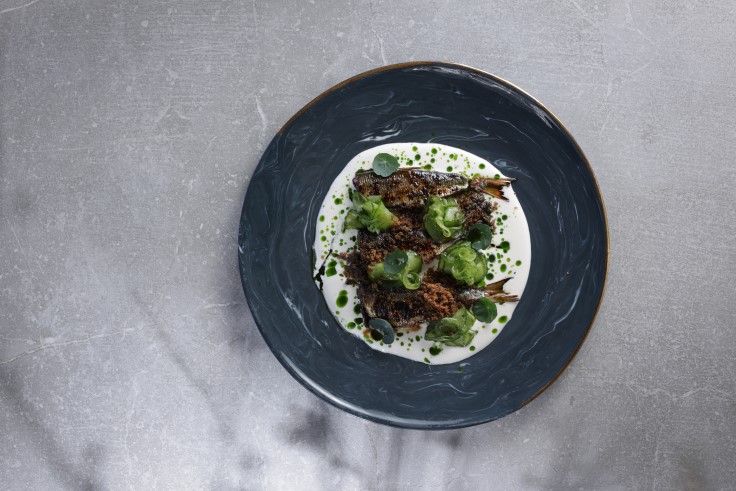
The Future of the Market
There is no doubt that Riga’s Central Market has taken a confident place at the helm of Latvia’s evolving culinary scene. Its traditional rotation of foraged and seasonal goods is thriving and it perfectly fits the growing appetite for nature-to-plate dining experiences. For those looking to understand Riga’s cultural and historic make-up, it’s no wonder the market is a frequently recommended first stop.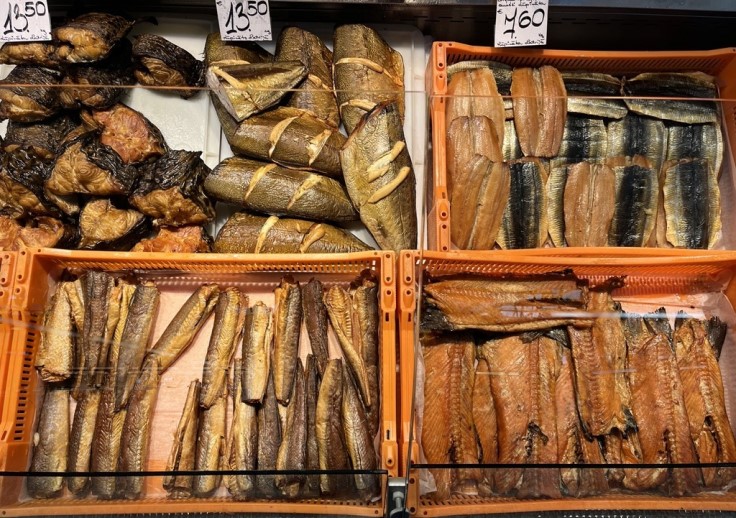
But is its evolution complete? Perhaps not. As of 2025, there are whispers of privatisation, in addition to scheduled renovations to reinforce the historic metal structure and roofing of the 'Milk Pavilion'. So it seems likely that the market’s round-the-clock hustling will undergo another metamorphosis.
Latvia’s cuisine, like its identity, is ever-fluid. The Central Market represents a cacophony of culinary traditions and a meaningful opportunity for community growth and connection. As Latvian cuisine carves out a respected place in Europe’s food scene, it’s important to recognise the ingredients and dishes that have contributed to its individuality. Riga’s journey has been nothing if not resilient. Within its historic steel frames, the Central Market encapsulates both memories and meaning.
Hero Image: A dish showcasing fresh produce from Riga Central Market, crafted by Head Chef Artūrs Trinkuns of Barents restaurant in Riga, Latvia (© Barents)















